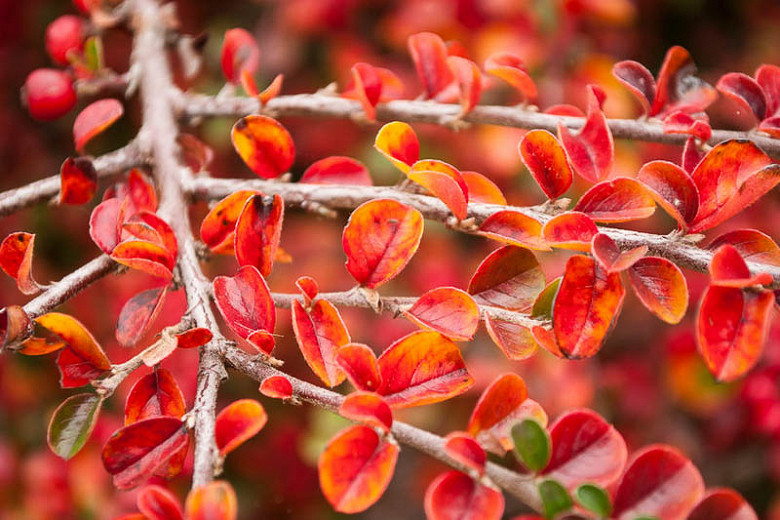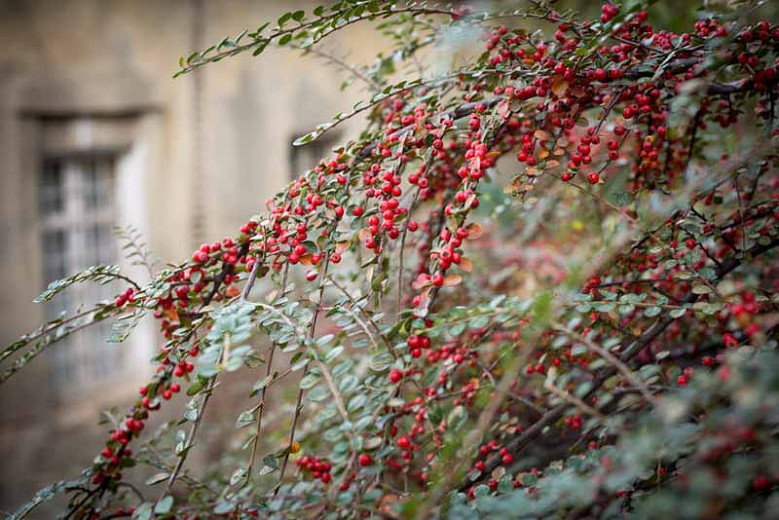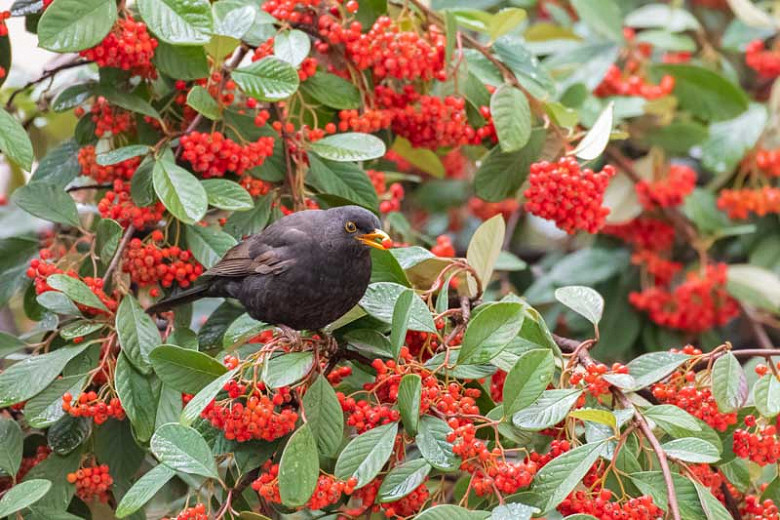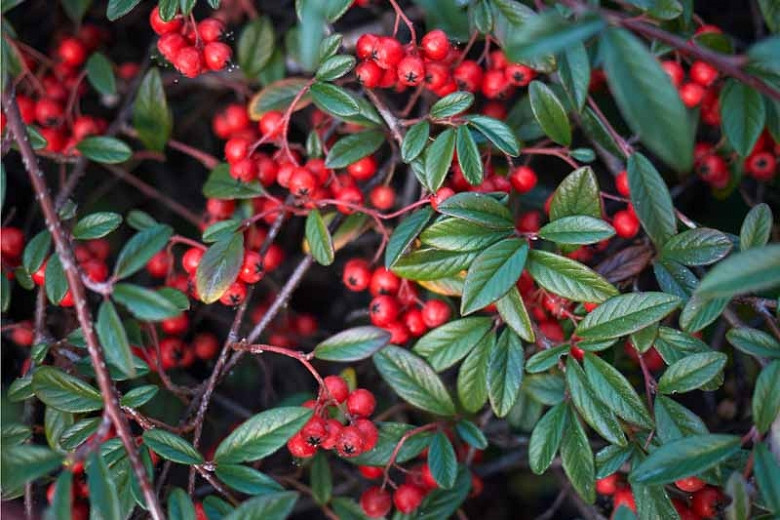Cotoneaster lucidus (Hedge Cotoneaster)
Cotoneaster lucidus (Hedge Cotoneaster) is a vigorous, erect, rounded, deciduous shrub with spreading branches clothed in elliptic-ovate, glossy, dark green leaves, up to 2 in. long (5 cm). The leaves turn brilliant shades of yellow and red in fall. In late spring to early summer, the branches are studded with small pinkish-white flowers held in clusters of 3-8.
Cotoneaster lucidus (Hedge Cotoneaster) is a vigorous, erect, rounded, deciduous shrub with spreading branches clothed in elliptic-ovate, glossy, dark green leaves, up to 2 in. long (5 cm). The leaves turn brilliant shades of yellow and red in fall. In late spring to early summer, the branches are studded with small pinkish-white flowers held in clusters of 3-8. Attractive to bees, they are followed by rounded, black berries which persist in the winter. Easy to grow, Hedge Cotoneaster is ideal for pruning and manipulating into geometric shapes. The shrub is densely branched, so it makes an excellent cut hedge.
- Grows up to 6-10 ft. tall and wide (180-300 cm).
- A full sun to light shade lover, this plant is easily grown in well-drained soils. Tolerant of dry soils. Protect from cold dry winds.
- Propagate by seed or cuttings.
- Native to Siberia, Northern Asia.
- Fruit may cause mild stomach upset if ingested
Requirements
| Hardiness | 3 – 7 |
|---|---|
| Plant Type | Shrubs |
| Plant Family | Cotoneaster |
| Exposure | Full Sun, Partial Sun |
| Season of Interest | Spring (Mid,Late)Summer (Early,Mid,Late)Fall |
| Height | 6' – 10' (180cm – 3m) |
| Spread | 6' – 10' (180cm – 3m) |
| Spacing | 120″ (300cm) |
| Water Needs | Average |
| Maintenance | Low |
| Soil Type | Chalk, Clay, Loam, Sand |
| Soil pH | Acid, Alkaline, Neutral |
| Soil Drainage | Well-Drained |
| Characteristics | Showy, Fruit & Berries |
| Attracts | Bees |
| Garden Uses | Hedges and Screens |
| Garden Styles | Coastal Garden, Informal and Cottage |








